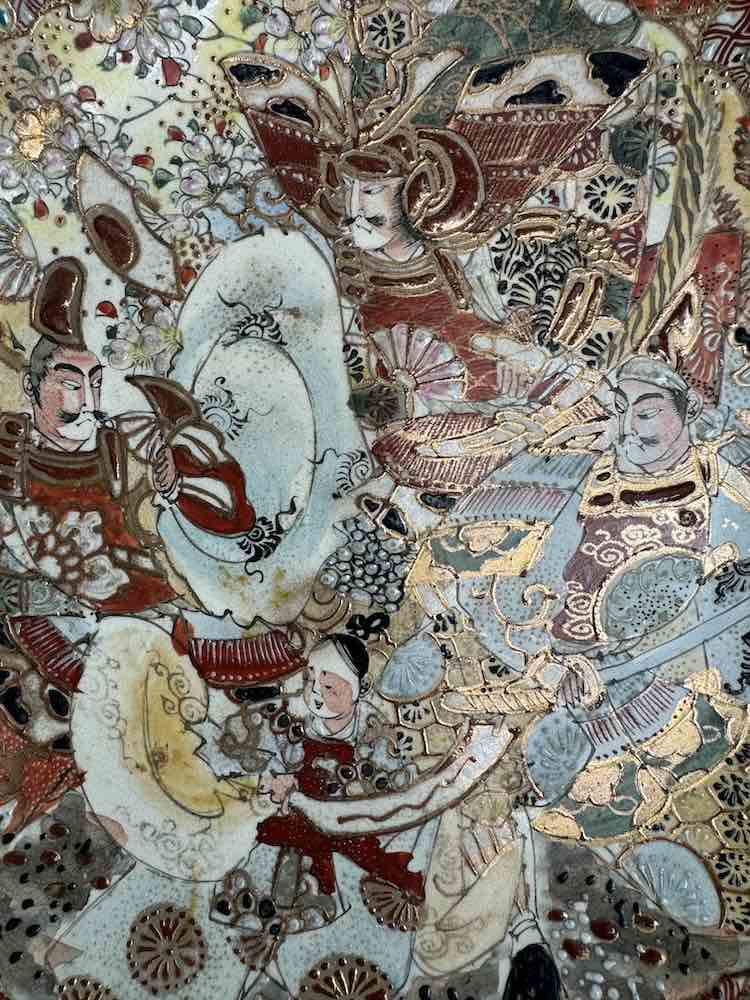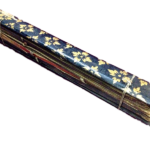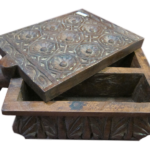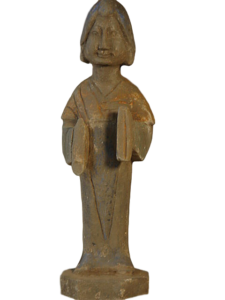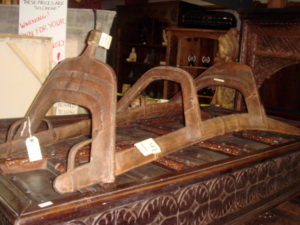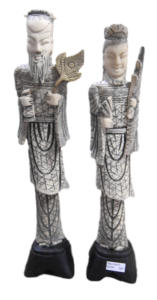

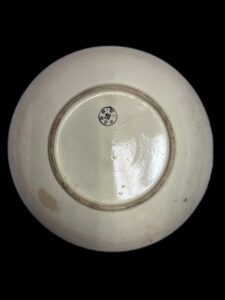
Description
A mid-Meiji era hand painted Satsuma plate with magnificent and detailed warriors on the surface. Satsuma ware is one of the most well known of the Japanese pottery styles often richly decorated with fine detail and liberal use of gold. The name comes from the region controlled by the Shimazu clan (Satsuma-han – officially Kagoshima and surrounding areas). The history goes back to around 1600 when Satsuma pottery was generally plain and in dark clay. They’re very different from the 19th century pieces made for export to the West.
-
Definition of the age of your Satsuma piece
Most commonly, Western collectors, as well as museums and auction houses date Satsuma ware by what they consider to be the applicable Japanese reign era name (eg.Meiji (1868 -1912); Taisho (1912-26); early Showa (1926 -1940); or Showa (1926-1989)). This is not spcific enough, because some of these periods are short (eg. Taisho) and others are quite long (eg. Meiji and Showa). Many important stylistic developments took place during the Meiji period, Therefore it’s more helpful to divide the 44 years of Meiji erta into three. Such as 1868 -1885 is a reasonable criterion for early Meiji; 1885-1900 for mid-Meiji; and 1895-1912 for late Meiji.
-
About the thin fine cracks in the glaze
Good quality ware from the Meiji and Taisho eras can be recognized by the fine density and ivory or honey color of the crackles. Fine crackles in the glaze are a characteristic of good quality Satsuma pottery, regardless of the age. Sometimes these crackles are so fine that you hardly can see them. Good quality glaze should be pale in color on a whitish or ivory paste. Which gives a pale honey or honey color to the crackles themselves. This is more difficult than simply firing over glaze enamels. For this reason, some Satsuma studios ordered pre-fired glazed and crackled blanks from a good pottery, then decorated it in their own workshop. In such cases, sometimes the name of the pottery will be impressed in the base, as well as the name of the decorator in over glaze enamel.
-
Decorative style and motifs
There are a number of major shifts in decorative motifs and styles in Satsuma ware in the late 19th century, the early 20th century and the years before and after World War II. We could use the styles as one of the ways for dating purposes. However, most (if not all) of these changes took place in the mainland centres of Satsuma production, rather than in the true home of Satsuma (ie Kagoshima). The discussion on reign eras only addresses Kyo-Satsuma, which is used as a shorthand term for Satsuma ware produced in any of the Honshu ceramic centers (ie, Kyoto, Osaka, Kobe, Yokohama, Tokyo etc). Most of this production was indeed in Kyoto.
A beautiful one of a kind piece and in good condition.
*Certain information in the description refer from the article below: https://www.satsuma-database.com/how-old-is-it-clues-on-dating-satsuma-wares
Dimensions: 10″ x 10″ x 1.5″
Antique piece. Sell in used, pre-owned condition. Vintage and antique items by nature have variable amounts of wear, imperfections, signs of use, age and time. Perfectly imperfect. Condition shown as in pictures. Kindly contact us if you need more info. or detail pictures.
Additional information
| Country | |
|---|---|
| Price |
$100 & Below |


